Nevada
Lithium Deposit In Extinct Nevada Volcano Could Be Largest In The World – CleanTechnica

“Money changes everything,” according to Cindi Lauper. She’s right. Money, or the quest for things that can be exchanged for it, is one of the principal motivators for all human activity. It’s what sent Columbus off on his journey across the ocean in search of the riches presumed to be awaiting him on the other side. In recent times, lithium has become “more valuable than gold” as the quest to build battery-powered vehicles has accelerated.
The Chinese were way ahead of the rest of the world when it came to recognizing the value of lithium. While most nations slept, China was busy identifying lithium deposits around the world and either buying them up or negotiating sweetheart deals with those who perhaps did not fully appreciated lithium’s value. It has leveraged its market power to become the dominant producer of lithium-ion batteries, with virtually complete control over every step in the process from mining to making battery components and manufacturing finished battery cells.
For the past decade, people have been wringing their hands in despair at how China pulled this off and bemoaning the fact that the United States is being left by the wayside. They assume America will always be beholden to China for this indispensable technology.
But a funny thing happened on the way to China’s brave new world of mineral dominance. It incentified others to seek alternatives. New companies sprang up to extract lithium from salt brine, especially in the Salton Sea area of California, but despite rosy projections, they are years away from extracting enough to meet America’s needs. Currently, Australia is the largest lithium supplier in the world.

Map showing type and relative size of global lithium resources. Current production is predominantly spodumene from pegmatites in Australia (47%) and brines underlying salt flats in Chile (30%), China (12%), and Argentina (5%). Credit: Benson, et al.
On August 30, 2023, three researchers — Thomas Benson, Matthew Coble, and John Dilles — published a paper in the journal Science Advances in which they report the discovery of what may be the largest lithium deposit known to exist anywhere in the world inside the caldera of an extinct volcano in Nevada near the Oregon border. If their discovery turns out to be accurate, it could have a dramatic impact on America’s ability to manufacture batteries without relying on Chinese sources. Here’s the abstract from their paper:
“Developing a sustainable supply chain for the global proliferation of lithium ion batteries in electric vehicles and grid storage necessitates the extraction of lithium resources that minimize local environmental impacts. Volcano sedimentary lithium resources have the potential to meet this requirement, as they tend to be shallow, high-tonnage deposits with low waste:ore strip ratios. Illite-bearing Miocene lacustrine sediments within the southern portion of McDermitt caldera (USA) at Thacker Pass contain extremely high lithium grades (up to ~1 weight % of Li), more than double the whole-rock concentration of lithium in smectite-rich claystones in the caldera and other known claystone lithium resources globally (<0.4 weight % of Li). Illite concentrations measured in situ range from ~1.3 to 2.4 weight % of Li within fluorine-rich illitic claystones. The unique lithium enrichment of illite at Thacker Pass resulted from secondary lithium- and fluorine-bearing hydrothermal alteration of primary neoformed smectite-bearing sediments, a phenomenon not previously identified.”
According to Chemistry World, the trio believes 20 to 40 million tons of lithium metal lie within a volcanic crater formed around 16 million years ago. That’s more than the deposits found beneath a Bolivian salt flat, which up until now has been considered the largest in the world.
An analysis found that an unusual claystone, composed of the mineral illite, contains 1.3% to 2.4% of lithium in the volcanic crater. This is almost double the amount present in magnesium smectite, which is more common than illite.
“If you believe their back-of-the-envelope estimation, this is a very, very significant deposit of lithium,” said Anouk Borst, a geologist at Belgium’s KU Leuven University. “It could change the dynamics of lithium globally, in terms of price, security of supply and geopolitics.
“This would be a multi-step alteration of lithium-bearing smectite to illite, where hydrothermal fluids enriched the clays in potassium, lithium and fluorine. They seem to have hit the sweet spot where the clays are preserved close to the surface, so they won’t have to extract as much rock, yet it hasn’t been weathered away yet,” he added.
How Did The Lithium Get There?

Credit: Benson, et al.
To a geologist, the story of how these deposits were created is a fascinating tale. The McDermitt Caldera formed 16.4 million years ago when some 1000 cubic kilometers of red hot magma exploded outwards. The caldera was filled with erupted products of an alkaline magma rich in sodium and potassium, as well as lithium, chlorine, and boron. This quickly cooled to form a finely crystalline glassy volcanic rock — ignimbrite — which weathered to produce lithium-rich particles.
A lake subsequently formed in the crater, persisting for hundreds of thousands of years with weathered volcanic and surrounding materials forming a sediment rich in clay at its bottom. The new analysis suggested that after the lake emptied, another bout of volcanism exposed the sediments to a hot, alkaline brine, rich in lithium and potassium.
“Previous research assumed that the illite was everywhere at depth in the caldera,” says Benson, who is a geologist at Lithium Americas Corporation (LAC), and was formed when high temperatures and pressures turned smectite to illite.
Benson’s team proposed that a layer of illite about 40 meters thick was formed in the lake sediments by this hot brine. The fluid moved upwards along fractures formed as volcanic activity restarted, transforming smectite into illite in the southern part of the crater known today as Thacker Pass. The result was a claystone rich in lithium.
The material could be best described as looking “a bit like brown potter’s clay,” said Christopher Henry, emeritus professor of geology at the University of Nevada in Reno. “It is extremely uninteresting except that it has so much lithium in it. There’s been a lot of searching for additional deposits,” Henry added. “The United States currently has just one small lithium producing brine operation in Nevada.”
Economically Significant
Benson says his company expects to begin mining in 2026. It will remove clay with water and then separate out the small lithium bearing grains from larger minerals using a centrifuge. The clay will then be leached in vats of sulfuric acid to extract the lithium.
“If they can extract the lithium in a very low energy intensive way or in a process that does not consume much acid, then this can be economically very significant,” says Borst. “The US would have its own supply of lithium and industries would be less scared about supply shortages.”
The Takeaway
All the handwringing about how America doesn’t have enough lithium to produce all the batteries it will need in the future is overblown. Resource scarcity always leads to the discovery of new resources. It has happened in the coal, oil, and gas industries for decades. Just when the fear mongers started saying we were about to run out of those commodities, either new supplies were found or new ways were discovered to extract more of them from beneath the surface of the Earth. Fracking is a perfect example of how new technology can keep extractive enterprises profitable far longer than anyone expected.
If America needs lithium, the glories of the free market will find it. Those with really long timelines can already envision a future in which it is replaced with other cheaper and more plentiful materials. Perhaps one day, future CleanTechnica writers will be talking about “peak lithium.”
Relax, people. Everything is happening just as it should and right on schedule. Of course, it would be nice if nations learned to cooperate in order to preserve the Earth for future generations, bug that will never happen. There’s no money in it.
If you own an EV, please complete our super short EV charging & safety survey.
I don’t like paywalls. You don’t like paywalls. Who likes paywalls? Here at CleanTechnica, we implemented a limited paywall for a while, but it always felt wrong — and it was always tough to decide what we should put behind there. In theory, your most exclusive and best content goes behind a paywall. But then fewer people read it! We just don’t like paywalls, and so we’ve decided to ditch ours.
Unfortunately, the media business is still a tough, cut-throat business with tiny margins. It’s a never-ending Olympic challenge to stay above water or even perhaps — gasp — grow. So …

Nevada
2024 one of the deadliest years on Nevada roads on record
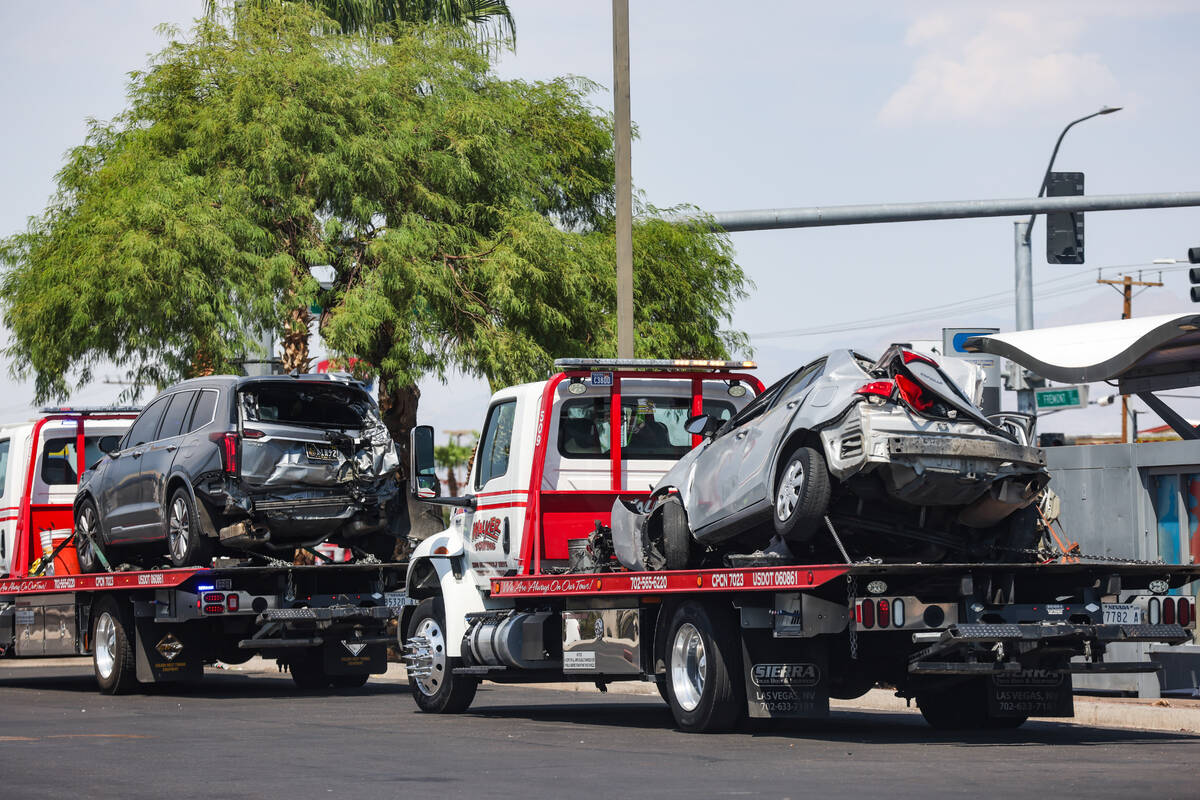
Last year proved one of the deadliest on Nevada roads, with 412 deaths resulting from vehicle crashes.
The 412 traffic deaths in 2024 resulted from 377 crashes involving a fatality, according to an annual report from the state Office of Traffic Safety. That makes 2024 the fourth-deadliest year on record, according to state records dating back to 1991 and tracked by the Las Vegas Review-Journal.
As is the case each year, the top contributing factors to fatal crashes were speeding and impairment, according to the state.
The Nevada Office of Traffic Safety’s internal tracking of crashes reveals that between 50-60 percent of those who die in road crashes have an impairing substance in their system, according to Anita Pepper, spokeswoman for the office.
The deadliest year on record was 2006 with 431 deaths. The next deadliest year was 2005 with 427; followed by 2022 with 416; 2024 with 412 deaths; and 395 in 2004 rounds out the five deadliest years.
“Unfortunately, the numbers are trending very high,” Pepper told the Review-Journal. “We are almost back to where we were in 2022, and it’s devastating to see that the number is climbing.”
Last year’s total is an increase of nearly 6 percent compared with 2023’s total of 390 traffic deaths.
In Clark County, traffic deaths rose nearly 14 percent in 2024, with 293 deaths compared with the 258 seen in 2023.
Increasing safety
Clark County’s Office of Traffic Safety, which was founded in 2022, is focusing on re-evaluating its priorities when it comes to roads, deep-diving into data,and looking at sections of roads and intersections that need to be improved.
“At some point there will be a document that is the Safe Streets for All Action Plan for Southern Nevada,” Clark County Office of Traffic Safety Director Andrew Bennett told the Review-Journal. “We’re focusing a great deal of resources on that.”
Erin Breen, director of UNLV’s Road Equity Alliance project, said a lot can be done to increase the safety of all road users, but she said only a few leaders have the will to stand up and explain what needs to be done.
“Because the average driver sees the change as detrimental to their commutes, and getting places fast is a way of life here, unfortunately, it’s the leading contributor to fatalities too,” Breen said.
With speed continually a top factor in fatal crashes, Breen said curbing that is the easiest way to reduce road deaths. She noted that it wouldn’t be cheap, but it is the easiest and most effective way to make Nevada roads safer.
“Changing how fast drivers are comfortable traveling would add to the safety and comfort of those on foot, bike or mobility device,” Breen said. “Narrowing travel lanes on arterial roads, with further reductions at intersections would slow drivers down and assure that the crashes that do happen would be less severe. It would also allow for protected bike lanes and wider sidewalks for those traveling under human power.”
Part of the county’s action to create the Safe Streets for All Action Plan includes overlaying crash and citation data with speed involvement to paint a picture of the Las Vegas Valley’s roads.
“That might have disproportionate representation of crashes and high-injury crashes,” Bennett said. “That will paint a picture countywide, including our rural communities in that as well. That’s the bigger picture, smaller picture I think we’ve done more and continue to work with individual neighbors and businesses in the community, places of interest, whether it be schools or parks, ensuring that we have the ability to listen to the people that are using our road networks.”
Vulnerable road users
Traffic fatalities among vulnerable road users, which includes pedestrians, cyclists and motorcyclists, saw some of the latest increases in the state and in the Las Vegas Valley.
Motorcyclist deaths rose an alarming 28 percent in the state, going from 64 in 2023 to 82 last year. In Clark County, motorcyclist deaths jumped 22 percent in 2024 compared with the year prior, going from 50 in 2023 to 61 last year. Washoe County, which includes Reno, saw a nearly 63 percent increase in motorcyclists’ deaths, from eight in 2023 to 13 in 2024.
“I can say that speed was a big factor in our increase. A lot of the time speeding motorcyclists were their own cause of death, but so many times they were aided by drivers turning, mostly on permissive flashing yellow arrows, which are great for moving cars, terrible for saving lives,” Breen said.
Bicyclists also saw an increase in fatalities, going from 14 in 2023 to 15 in 2025, a 7 percent increase in the state and increasing from 10 to 11 deaths in Clark County, a 10 percent jump.
Pedestrian deaths in the state rose by nearly 5 percent, going from 107 in 2023 to 112 in 2024. In Clark County, pedestrian deaths rose by 14 percent, with 95 deaths last year, up from the 83 seen in 2023.
“In 2023, the state reached over 100 pedestrian fatalities for the first time, we came dangerously close just in Clark County (this year),” Breen said.
Breen noted that during the Great Recession, when fewer people were driving, only 29 and 30 pedestrian fatalities occurred in 2009 and 2010, respectively. That number increased to a then-all-time high in 2017 at 78 fatalities, a number that then was topped in both 2018 and 2023, with 83.
“Our population increase isn’t the issue, people who drive far too fast and completely focused on themselves is a problem,” Breen said.
Deaths tied to vehicle occupants not wearing a seat belt dipped slightly with 64 in 2024 compared with 68 in 2023, a nearly 6 percent drop in the state. Clark County saw a nearly 10 percent decrease, going from 41 last year to 37 in 2024.
Personal choices
Even with all the messaging, educating and engineering from state and local officials occurring in relation to roads, the key aspect to increasing safety is choices made by each individual driver, Bennett said. Even though many believe that speeding will get them to their destination quicker, in traffic, data suggests otherwise.
“We need to have an honest conversation with out community,” Bennett said. “There’s report after report that shows that speeding 10-12 mph over the speed limit doesn’t result in you getting to your destination any quicker. Speeding isn’t worth it. Nothing delays traffic like a fatal crash. We’re trying to balance moving our community safely and effectively, but making sure that safety is part of that conversation.”
Contact Mick Akers at makers@reviewjournal.com or 702-387-2920. Follow @mickakers on X. Follow @mickakers on X. Send questions and comments to roadwarrior@reviewjournal.com.
Nevada
'We have a DUI problem in the valley': Nevada State Troopers arrest 182 Las Vegas drivers for DUIs in December

LAS VEGAS (KTNV) — It’s a problem that data shows only seems to be getting worse in Southern Nevada — people driving under the influence of alcohol or drugs.
Local law enforcement agencies hold DUI enforcement blitzes throughout the year, that’s nothing new, but perhaps none are more notorious in Las Vegas than the ones held on New Year’s Eve — one of the most dangerous times to be on valley roadways.
This year was no different.
In a 24-hour period from noon this New Year’s Eve to noon on New Year’s Day, Nevada State Police (NSP) Troopers arrested 49 drivers for DUI statewide, a whopping 36 of those were right here in Clark County.
“We do have a DUI problem, impaired driving throughout the valley,” said Trooper Shawn Haggstrom.
Haggstrom said new data shows there were 182 DUI arrests in Las Vegas alone in the month of December.
“I think it’s staggering,” Haggstrom said. “If you think about it, that’s five or six DUI arrests every day.”
Five or six DUI arrests a day can make a difference, because when it comes to fatal crashes: “the two largest contributing factors here in Nevada are speed and impairment,” Haggstrom said.
We know 2024 was a particularly deadly year on our roads, too, with 412 deaths statewide — 293 of those happened right here in Clark County, a 13.6% increase from 2023.
“Even one fatal is too much,” Haggstrom said. “It doesn’t just affect that person that’s gone–that’s a family member, that’s a dad, a cousin, a brother, a friend.”
That’s why as we start a new year, Trooper Haggstrom reminds all of us not to drink and drive.
“Don’t take that risk,” Haggstrom said. “Because once you get in that vehicle, it’s like a 5,000 pound bullet — you can end up killing somebody or seriously injuring somebody.”
Law enforcement around the valley plan to continue working together on DUI blitzes several times in 2025, so make sure you’re planning ahead, identifying a designated driver or using ride shares.
Haggstrom’s message to drivers is simple: “Drive sober, or get pulled over.”
Crime & Court on Channel 13
Nevada
7 Perfect Destinations for a Long Weekend in Nevada
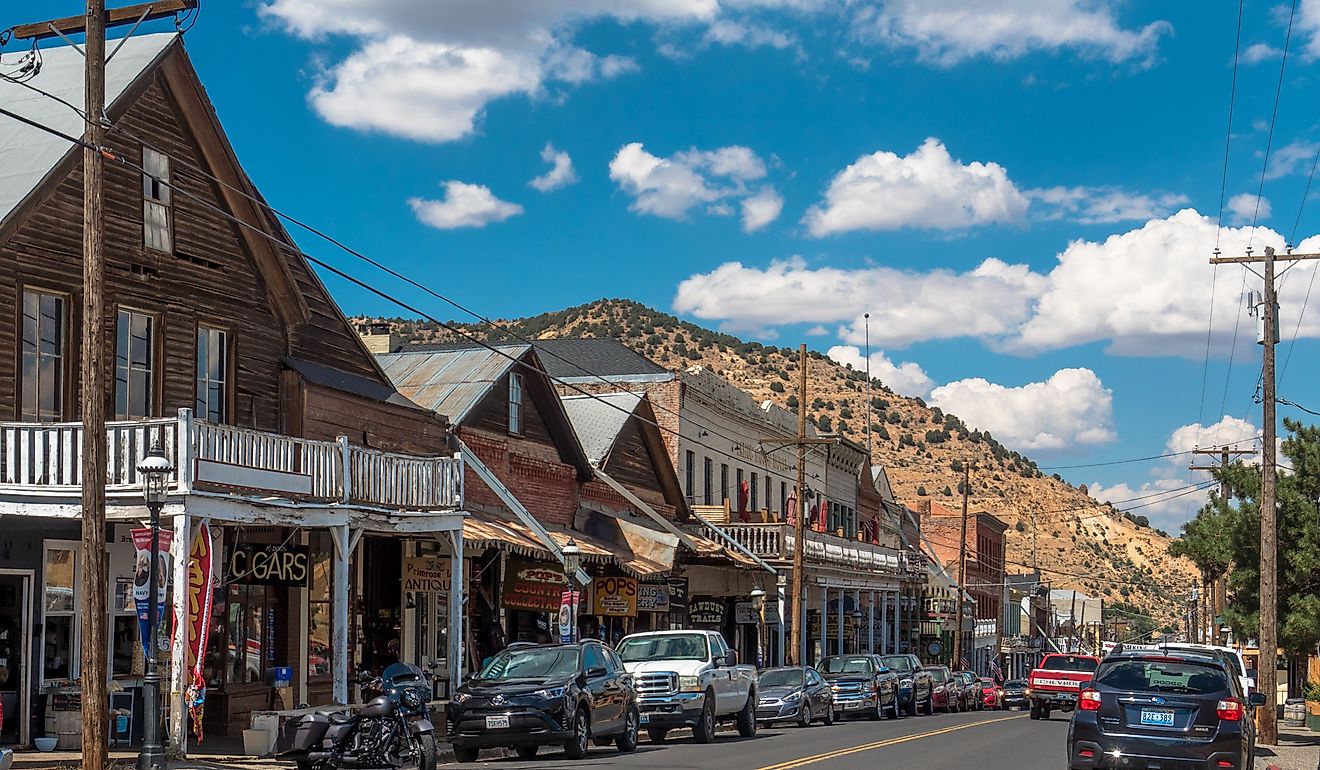
When people think of this unique state, they often only picture Las Vegas, gambling, and nightlife, but there’s so much more! Nevada is the 7th largest state and is also known for its rocky mountains, mining history, and iconic desserts. It gets its name from “Sierra Nevada,” which translates to “snow-covered mountains” due to there being 314 named mountain ranges. This state was founded in 1864 during The Civil War and is nicknamed “Silver State” as it is considered the second-largest producer of silver. Come spend one of your long weekends in one of these picturesque towns!
Elko
With a population of 20,500, this vacation spot gives visitors a chance to experience city living while still having stunning nature views. Whitecap mountains surround the town and give it picturesque scenery. Start your first day off by walking around the elaborate city and visiting the Northeastern Nevada Museum to learn about the local history and wildlife and to see some art exhibits. Spend the next day immersing yourself in nature and hiking part of The Ruby Crest Trail or part of the Ruby Mountains, which is a remote wilderness hiking experience located in the Humboldt-Toiyabe National Forest. This is one of the most popular trails located around Elko and features rocky mountains overlooking lakes. On your way to this trail, stop by the South Fork State Recreation Area to see views that will ingrained in your memory forever.
On the last day, head over to the Western Folklife Center to learn about cowboys, their history, and the American West. Afterward, stop by the Riparian Hot Spring to soothe the muscles and experience naturally warm waters and a peaceful atmosphere. This spot is great for individuals looking to experience ultimate relaxation with being enveloped in the sounds of nature. Stay at the Rodeway Inn Elko Downtown Area for only $50 a night or the Hampton Inn Elko for $103 a night.
Boulder City
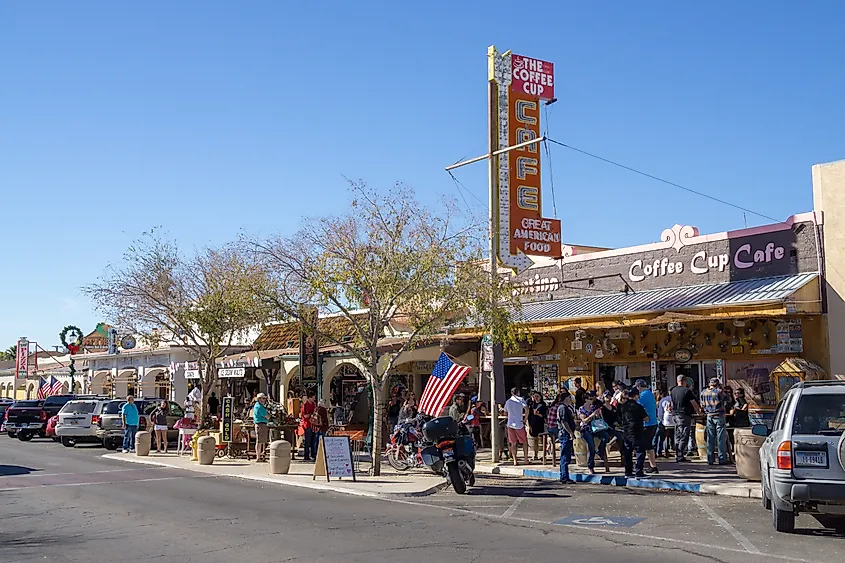
Only 26 miles from the most popular city in Nevada, known as Las Vegas, this spot is perfect for individuals still wanting to be around the bustling scene but wanting to experience a small-town feel. With only a population of 14,000, this city features rows of historic homes, a historic district, and constant scenery of red rocky mountains. Upon arrival, head over to the north end of the city to visit the overlook points known as the Mountain View and Lake Mead View Point. This shows a breathtaking view of forests, rocky mountains, deserts, lakes, and unique formations.
During your visit, stop by two excellent museums that are offered in the area. The Nevada State Railroad Museum has donated trains from the famous Virginia and Truckee Railroad. You can even take a 45-minute train ride! The Boulder City-Hoover Dam Museum is free to enter and tells the story of the men and women who braved the desert to build Hoover Dam and settle Boulder City. Both of these museums are essential when visiting. For hiking and to see the incredible sandy landscapes, check out the Bootleg Canyon Park Trailhead, River Mountain, or the Historic Railroad Hiking Trail. To relax, Boulder Beach and Goldstrike Hot Spring are essentials! After packed-filled days, head back to the Boulder Dam Hotel for around 100 dollars a night!
Winnemucca
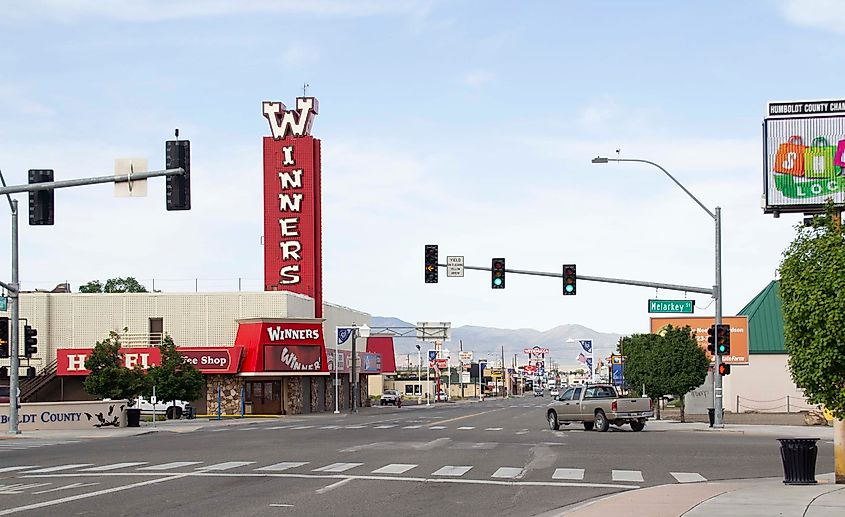
This town was named after Chief Winnemucca, who was a part of the Northern Paiute Tribe and a war chief and translates to “one moccasin” (since he always had one shoe on) or “The Giver” due to his daughter’s participation in advocating for fair treatment. Most tourists travel to this town to hike Winnemucca Mountain, which has an elevation of 6,760 feet and an out-of-this-world view. Travel only 10 mins outside of the city to visit the Winnemucca Sand dunes or 20 mins to the Water Canyon Recreation Area for hiking. Stop by the free modern brick building known as The Humboldt Museum to see remains from the ice age 13,000 years ago, art, vintage automobiles, and to learn about the history of American Indians and mining. End the day at the Econo Lodge Inn and Suites for only 52 dollars a night!
Baker
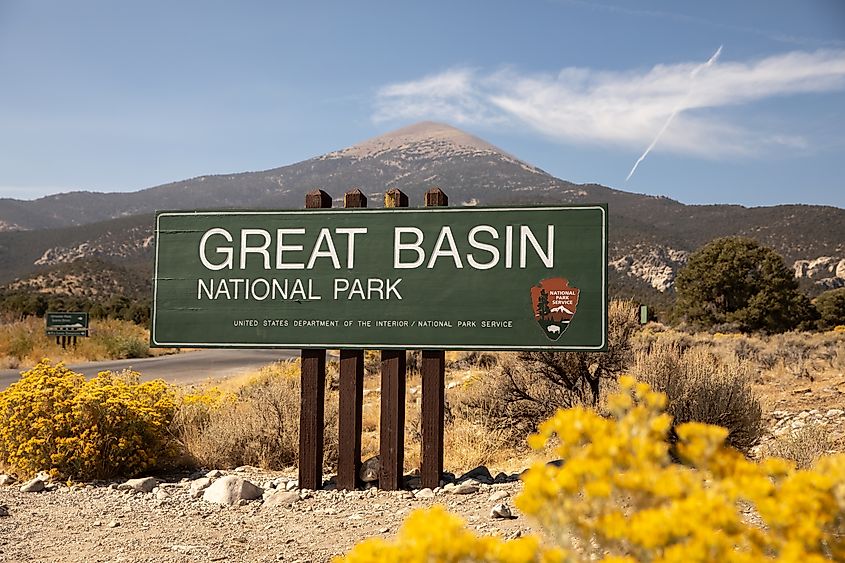
This very small town is close to the Utah border and is the last stop before the “Loneliest Road in America,” which is a 408-mile-long highway of complete isolation. Baker is ideal for individuals looking to go on a nature retreat! Only 5 miles from the entrance of the well-known Great Basin National Park, this town attracts a lot of people looking to explore all parts of this unique park. Hike one of the four mountain peaks with 360 views (or all if you’re up for the challenge) that includes Wheeler Peak (elevation of 13,000), Pyramid Peak (elevation of 12,000 feet), Lincoln Peak (elevation of 11,600) or Granite Peak (elevation of 11,218). Stop at the Lehman Caves and take a guided tour to see more than 300 rare and unique shield formations. While there, check out the Mather Overlook to view white cap mountains from the ground.
Take a drive through the Wheeler Peak Scenic Drive to view the world’s oldest trees, which are nearly 5,000-year-old bristlecone pines. Lastly, take a walk to view the Lexington Arch, which is made of limestone and created by strong weather forces that have been working for centuries. Stay at the Stargazer Inn or End Of The Trail in between the busy days!
Virginia City
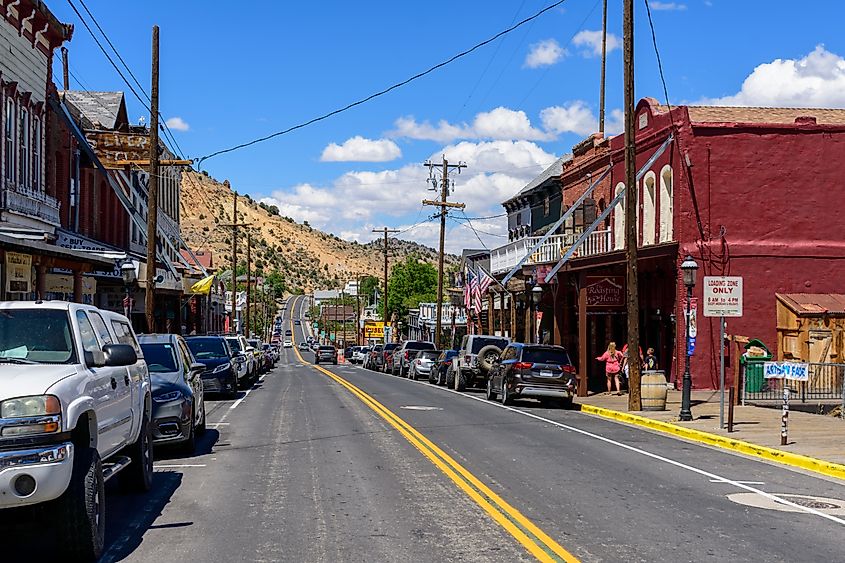
Southwest of Reno, Virginia CIty is home to Victorian buildings that were built in the 19th century during a mining boom. There are three museums in the area to focus on keeping the history alive. To learn more about mining and what it was like to live during the heyday, stop by The Way It Was Museum. The Historic Fourth Ward School And Museum is the last four-story school building of its time and has interactive exhibits. This has a preserved classroom from 1876 that allows visitors to sit and experience what it would be like to go to school back then. Lastly, The Comstock Firemen’s Museum teaches about The Great Fire Of 1875 and gives a glimpse of the men who fought it.
The Chollar Mine Tour takes you deep underground to see how the miners of the Gold Rush extracted 17 million in gold and silver, which made this city famous. For hiking, take the trek up Mt. Bullion or Mt Davidson for beautiful scenery. Stay at the Silverland Inn for 81 dollars a night or The Virginia City Bed and Breakfast.
Tonopah
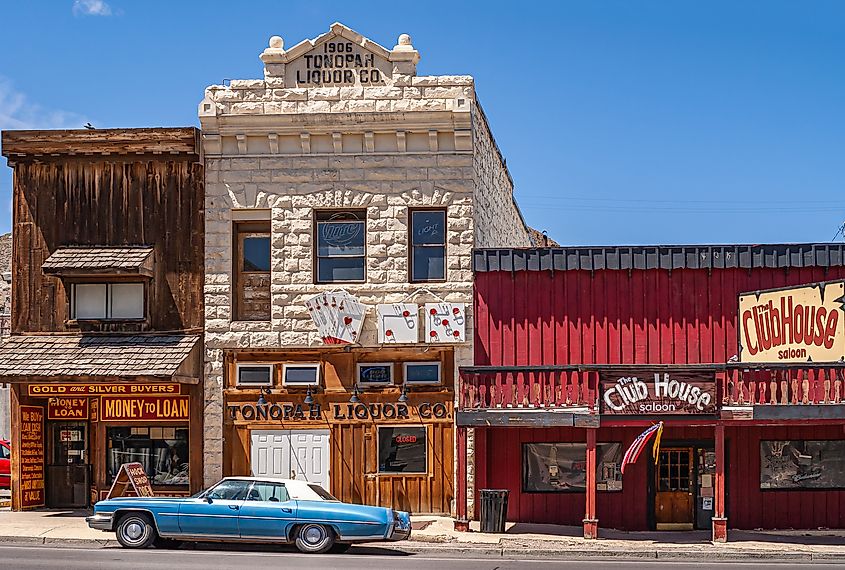
Tonopah was nick-named “Queen Of The Silver Camps” due to its success in the mining industry in the 1900’s. It is known for world-class stargazing and vast desert landscapes. To learn about mining, take a step into the Tonopah Historic Mining Park to explore more than 100 acres of history, tunnels, caves, and artifacts. Stop by the Old Tonopah Cemetery to view a well-preserved desert cemetery from 1901. From pioneers, old miners, and politicians, learn about the 300 people who are buried there and the thrilling stories behind each of their lives. For a challenge, spend a day hiking Brougher Mountain for an overlook of the town, rocky formations, and desert. Stay at the infamous Clown Motel or at the Mizpah Hotel for direct access to downtown.
Ely
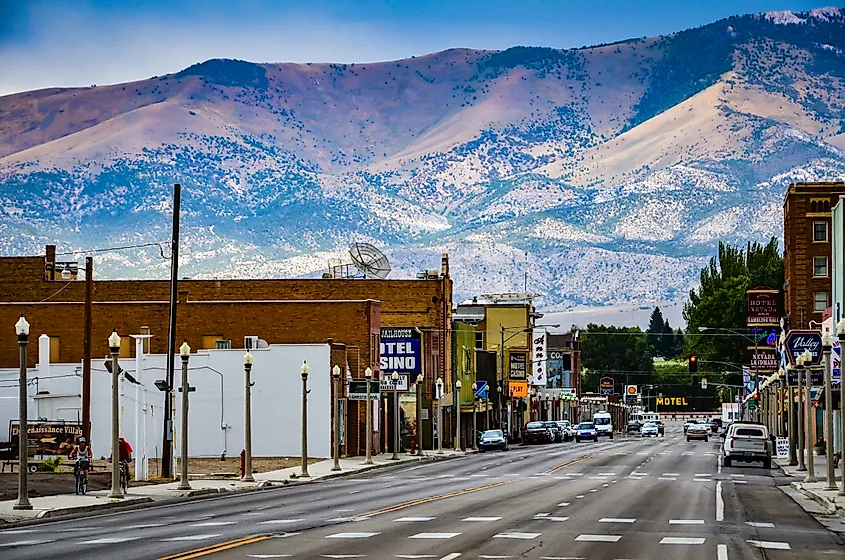
Ely is a four-season mountain town where art and outdoor adventures thrive. Brace yourself to be surrounded by white-capped mountains in this town of nearly 4,000! Named in 1878, it was originally a stagecoach station along The Pony Express and became one of the top 10 producers of U.S. copper for 15 years. To learn more about the impact of mining and its general history, visit White Pine Public Museum. After, walk over to the Nevada Northern Railway Museum to take a train ride through the nearby landscape that you will be sure to remember forever. Drive 25 minutes to Ward Charcoal Ovens State Historic Park to see six beehive-shaped charcoal ovens that used to process silver. This 700-acre park also has astonishing hikes and remarkable views. After each eventful day, come back to either the Magnuson Hotel Ely for only $54 a night or at the Ramada By Wyndham Ely for $78 a night!
Spend Your Next Long Weekend In Nevada
Nevada is the driest state in the nation, with an average of 10 inches of precipitation a year! This will guarantee beautiful weather throughout your stay while you hike one of the challenging or easy mountains, lay out on a beach, take a walk through the forest, or explore the scenic towns. Whether it’s a smaller town like Baker to visit Great Basin National Park, a city like Elko, or a historic town like Virginia City, this state has it all. Plan your next long weekend in one of these beautiful towns!
-

 Politics1 week ago
Politics1 week agoWho Are the Recipients of the Presidential Medal of Freedom?
-

 Health1 week ago
Health1 week agoOzempic ‘microdosing’ is the new weight-loss trend: Should you try it?
-
/cdn.vox-cdn.com/uploads/chorus_asset/file/25822586/STK169_ZUCKERBERG_MAGA_STKS491_CVIRGINIA_A.jpg)
/cdn.vox-cdn.com/uploads/chorus_asset/file/25822586/STK169_ZUCKERBERG_MAGA_STKS491_CVIRGINIA_A.jpg) Technology4 days ago
Technology4 days agoMeta is highlighting a splintering global approach to online speech
-

 News1 week ago
News1 week agoSeeking to heal the country, Jimmy Carter pardoned men who evaded the Vietnam War draft
-

 Science2 days ago
Science2 days agoMetro will offer free rides in L.A. through Sunday due to fires
-

 News1 week ago
News1 week agoTrump Has Reeled in More Than $200 Million Since Election Day
-

 Movie Reviews6 days ago
Movie Reviews6 days ago‘How to Make Millions Before Grandma Dies’ Review: Thai Oscar Entry Is a Disarmingly Sentimental Tear-Jerker
-
/cdn.vox-cdn.com/uploads/chorus_asset/file/25821992/videoframe_720397.png)
/cdn.vox-cdn.com/uploads/chorus_asset/file/25821992/videoframe_720397.png) Technology6 days ago
Technology6 days agoLas Vegas police release ChatGPT logs from the suspect in the Cybertruck explosion














